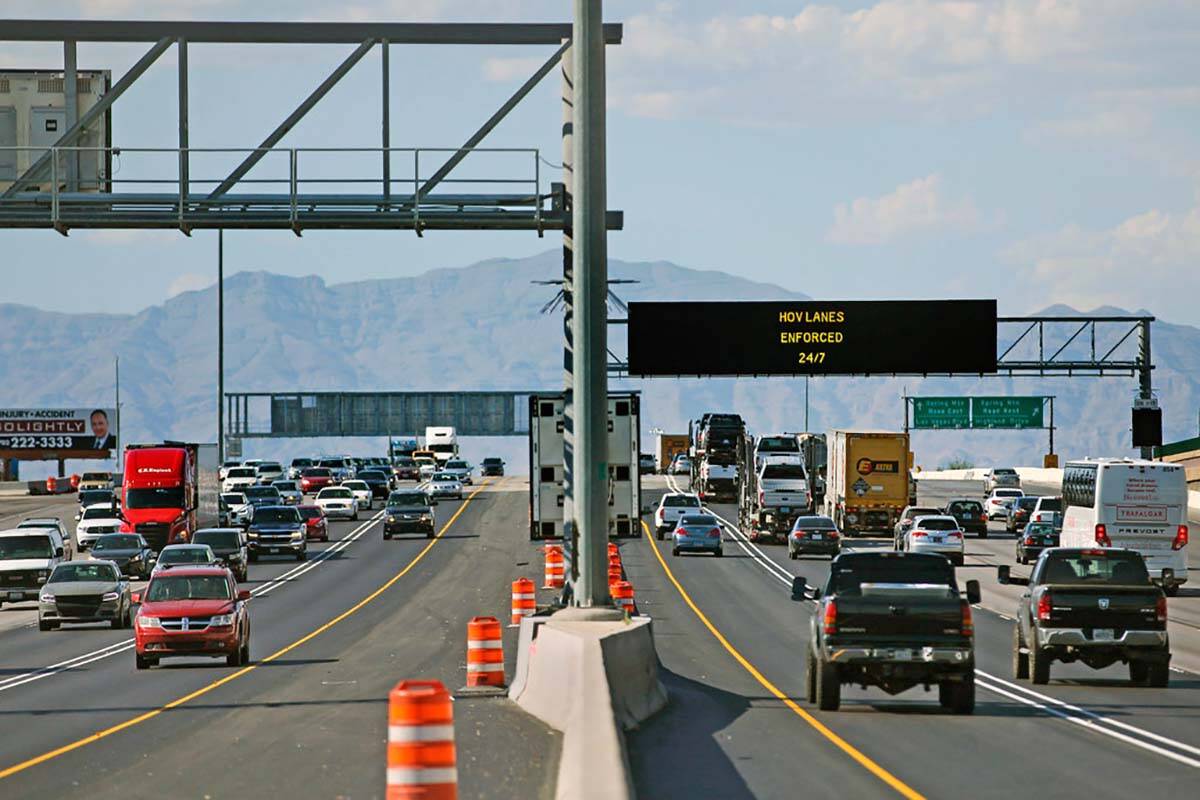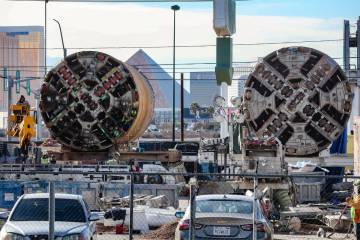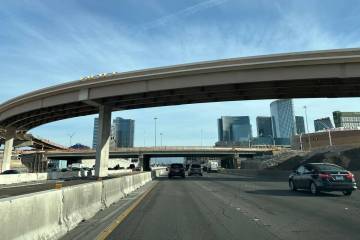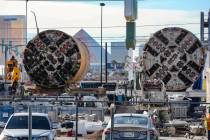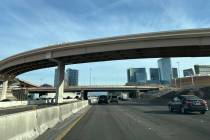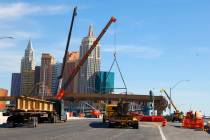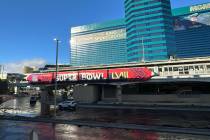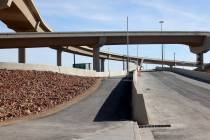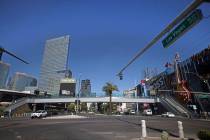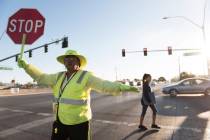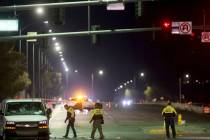Changes to HOV lane restrictions could be on the way
For the motorists who’ve complained to the Road Warrior about high occupancy vehicle lane usage over the years, help could soon be on the way.
A pilot program with varying hours of HOV lane restrictions could come to Las Vegas Valley freeways as soon as this fall.
Sensors that can detect how many occupants are in a vehicle in HOV lanes that stretch along 22 miles on Interstate 15 and U.S. Highway 95 are set to be installed, according to the Nevada Department of Transportation.
This week, 17 sensors are being installed on various portions of the two highways, which will lead to some overnight lane closures. Once those are in place, the department and engineering firm CA Group, which is leading the study, can track vehicle volume and occupants using the HOV lanes.
The department will be able to accumulate about two and half months’ worth of data once the sensors are in place, along with other information that’s been collected over the past few years, before they look at recommending changes in August.
“We can get an idea of how many people are actually two-plus in the HOV lanes, how many are violating the HOV rules out there,” Chad Anson, CA Group partner said June 9 during a presentation at a Regional Transportation Commission board meeting. “We’re also looking at a lot of other data available, such as (Freeway and Arterial System of Transportation) data and all the sensors that the FAST system has out there.”
The sensors cannot be used for enforcement purposes, Transportation Department spokesman Justin Hopkins said.
Aside from local data, other states’ HOV lane practices will also be reviewed to determine if any of those fit in Southern Nevada.
Traffic volume, speed and HOV occupancy lane usage will be reviewed on I-15 and U.S. 95 in 15-minute increments. This will help CA Group determine peak hours of HOV lane usage and overall traffic in other lanes.
If the data suggests changing the restriction times of the current 24-hour HOV lane regulations — to, say, only during peak rush hours — then those changes will go into effect in late October or early November.
“Through this process we’re going to develop what we call the initial concept of operations report,” Anson said. “That’s kind of how we anticipate or recommend the how the HOV system should be operated.”
From there, any time changes made will be in place for an 18-month pilot program, to which that data will be reviewed for potential permanent changes to the HOV lane system. During that pilot program modifications to the HOV lanes could be made on a quarterly basis, as data warrants.
“Every three months looking at the data, looking at the usage of the HOV lanes and also get some public feedback every quarter,” Anson said. “To judge how many people are using them, responding that they use them, are they reducing some trips, which we hope will be occurring.”
With I-15 seeing higher traffic than U.S. 95, any possible changes to the HOV lane hours will be dictated on the valley’s busier freeway. Having different enforcement hours on the two highways would likely be problematic for motorists and law enforcement officials, Anson said.
The 24-hour HOV lane restrictions were instituted on both freeways as part of Project Neon in 2019. To lawfully utilize the carpool lanes a vehicle must have two or more occupants and no more than two axles. Motorcycles, RTC buses and emergency vehicles are also allowed to utilize the HOV lanes at all times.
Before the HOV lanes were added on I-15, there was a section on U.S. 95 that featured restrictions only during peak traffic hours. Outside of the rush hour time frames, the carpool lanes were general purpose lanes, open to all motorists.
The pilot project was planned to go into effect earlier, but the pandemic’s impact on traffic set that back, along with supply issues tied to the sensors being used.
Eliminating HOV lanes is not a potential outcome of the pilot project. If it is determined that most motorists using the lanes are doing so without passengers, the department will look to its partners to address that.
“If we find a lot of single occupants in the HOV lanes, we’re actually gong to work with our partners, law enforcement, RTC and others to see what the strategies are to encourage carpooling and to discourage single occupancy,” said department Director Kristina Swallow. “The HOV lanes are actually required as a greenhouse gas mitigation. So, therefore we need to be sure we’re working on ensuring they’re being used for that purpose.”
^
Contact Mick Akers at makers@reviewjournal.com or 702-387-2920. Follow @mickakers on Twitter. Send questions and comments to roadwarrior@reviewjournal.com.



